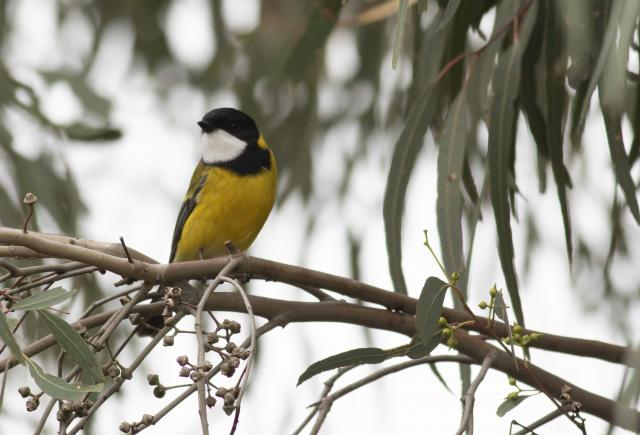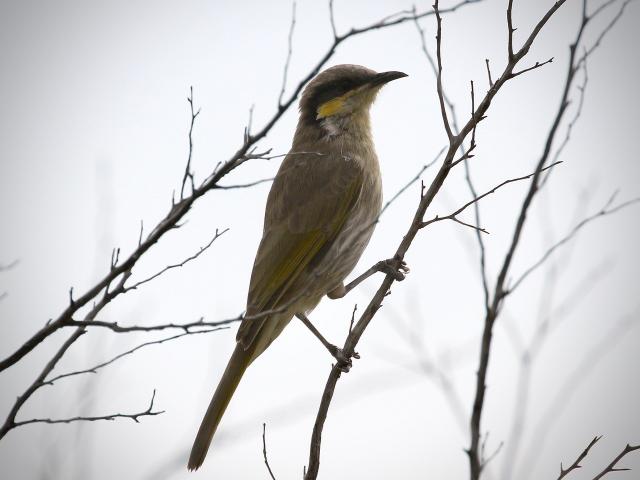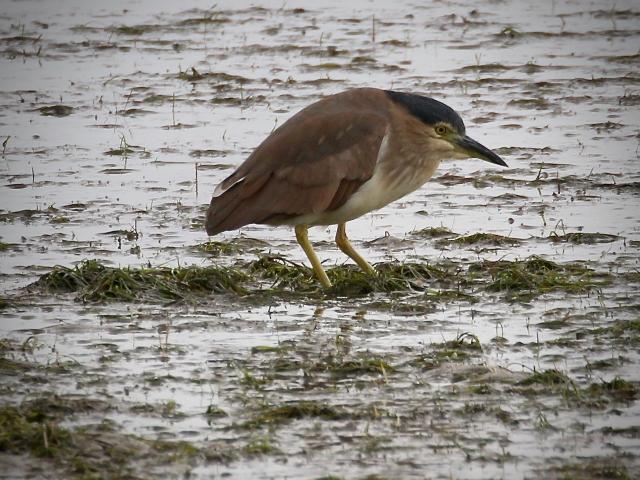There have been some glorious, sunny autumnal days over the past few weeks and my birdwatching exploits have been severely curtailed by the infamous ‘spicy cough’, which I have picked up. The only birds I have seen have been in the garden, which has been lovely but there’s not great variety!
Prior to my brush with the ‘spicy cough’ I did see, from a distance, a Spotted and Spotless Crake at Breamlea Wetlands, which was lovely.
As well as the crakes there were five Great Egrets, a few Little Grassbirds and White-fronted Dotterels. I also saw a male and juvenile Golden Whistler at Dan’s Reserve, as well as three female Flame Robins, and a pair of Brown Falcon’s calling to each other. Flame Robins travel to coastal and more open areas once the weather becomes a bit colder in mountainous regions. Tasmanian Flame Robins have also been seen to fly to the mainland to avoid the colder Tasmanian winter climate. It’s interesting that female Flame Robins tend to make these seasonal movements before the males.
The adult male Golden Whistler is bright yellow on the belly, olive-green on the back and wings, and black on the head. The throat is white, and is separated from the yellow belly by a black band. Like many species of birds, the female plumage in Golden Whistlers is much duller in that they are grey and brown. The eye is reddish brown in adults of both sexes. Young Golden Whistlers are a rufous colour particularly on the wings. These birds are always difficult to photograph as they feed in the tree canopies and move quickly through the foliage, feeding on insects. The male Golden Whistler that I saw at Dan’s Reserve paused momentarily while it was on a branch, but not for long enough for a decent photo.
I heard from Doctor Brooke from my work. She lives in Ocean Grove and was very excited as she saw a Tawny Frogmouth on the fence of her property. I could certainly relate to Brooke’s delight at spotting a Tawny, and I’ve never seen one in my garden so that would lead to double delight! Brooke said that the bird was very large, so I imagine that it was a male Tawny Frogmouth.Tawny Frogmouths are between 34cm (females) and 53cm (males) long. Their plumage is grey, white, black and rufous, which allows them to camouflage against tree stumps and branches.
Kevin saved my bacon in regards to having something to write about, and sent me an email about his visit to Queenscliff. Kevin photographed Swans, Pelicans, Little Egrets, Nankeen Night Herons and Grey Teal as they were feeding along the shoreline of Swan Bay at low tide. In the surrounding vegetation Kevin spotted a Singing Honeyeater and a Spiny-cheeked Honeyeater, which was lovely, as these two honeyeater species are not nearly as common as the New Holland Honeyeater around the Bellarine. The Spiny-cheeked Honeyeater has a very unusual song, and it always stopped me in my tracks. It’s described as a‘jerky, gurgling jumble’ by Birdlife Australia! I was surprised to see so many Spiny-cheeked and Singing Honeyeaters when I was crossing the Nullarbor last year, and these birds can survive in a variety of habitats, including very arid areas, as well as in dry woodlands, mallee and acacia forests, coastal scrubs, in trees surrounding rivers and, mangroves.
I heard from Tom Fletcher that he ventured to the Western Treatment Plant on Anzac Day with Angus Hartshorn, and they managed to see 86 species of birds in one day! That is a very fine day out, and it would have been much preferable to my five species of bird that I saw out my isolation window!









